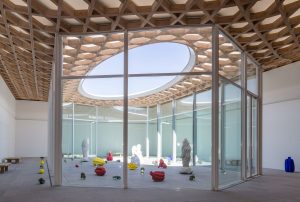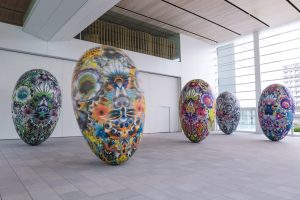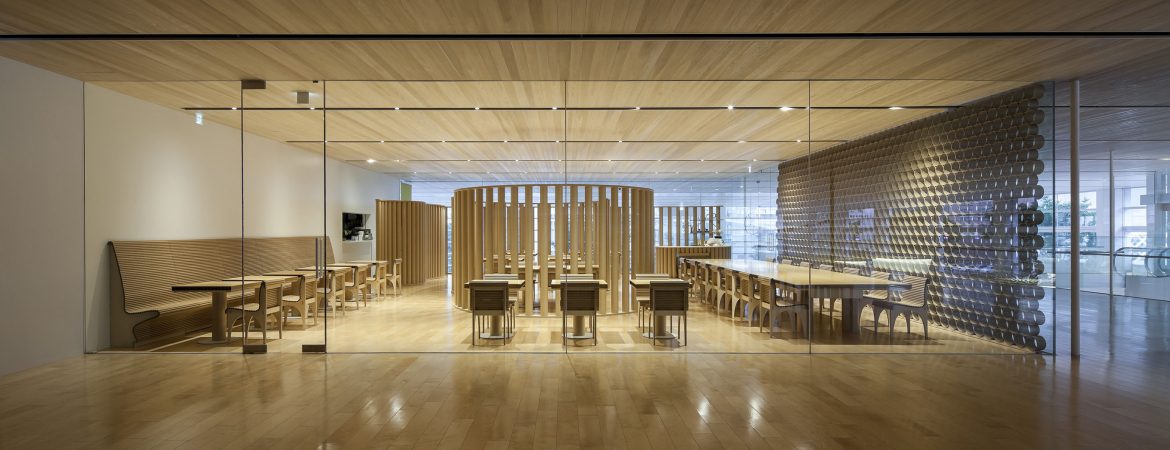Known for his creative and innovative work with paper and recycled materials, Japanese architect Shigeru Ban has become more than just a celebrated architect - he received the 37th Pritzker Architecture Prize in 2014. He has been praised for his humanitarian effort all over the world, having created quick and efficient housing for disaster victims by using recycled cardboard tubes. Now, if this doesn’t make you want to join the Shigeru Ban Fan Club, we suggest that you take a moment to SEE what else he has enriched the architectural world with.
For example, The Oita Prefectural Art Museum, OPAM, on the southwestern Japanese island of Kyushu. In this specific project he strived to get together the entire community and create a hub not just for art enthusiasts. The goal was to design a public gathering space that would enable cultural stimulation in various fields of creative disciplines, including art, food, poetry, theater, dance and many others.
The structure itself is a simple 80 meter long rectangular box, blending in with the neighboring buildings, it’s simplicity makes entering and navigating smooth. The ground floor level has 6-meter glass panels that can be folded upward opening the space to a public plaza and therefore transforming the space completely, making it blend in with its environment and creating an effortless fluidity inside the building. This concept for the public space comes from the “Engawa”, a covered outdoor space adjoining traditional Japanese houses.
The use of Bamboo isn’t only characteristic to Ban’s work, but also links the museum to Japan’s beautiful nature. The woven façade continues into the museum creating a natural and warm reference to the area’s traditions.
Artwork is displayed throughout the indoor-outdoor space, while the café and museum shop are situated inside the building. Both of which are designed to be movable to adapt to the spatial requirements of the exhibitions. Exhibition Room A is an ever-changing space; with its movable walls it can transform the atrium into individual closed galleries and host any kind of art works. This ever changing space allows the visitors to experience the museum differently every time they visit. Small on-site studios provide spaces of growth for emerging artists.


The large gallery space in the museum can host large collections, which are not only composed of traditional Japanese art but also by pieces of famous Western artists.


























